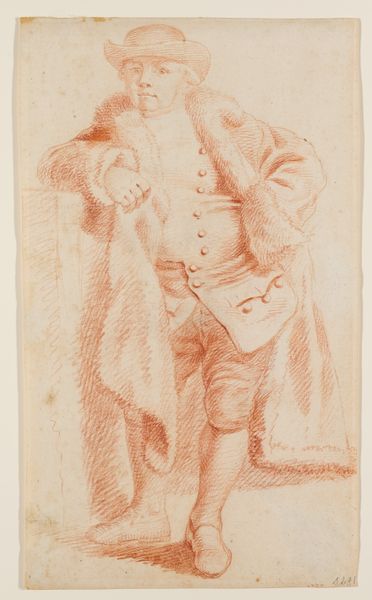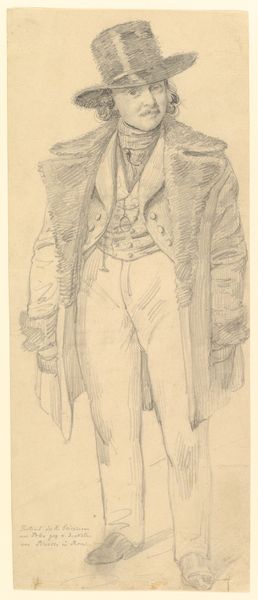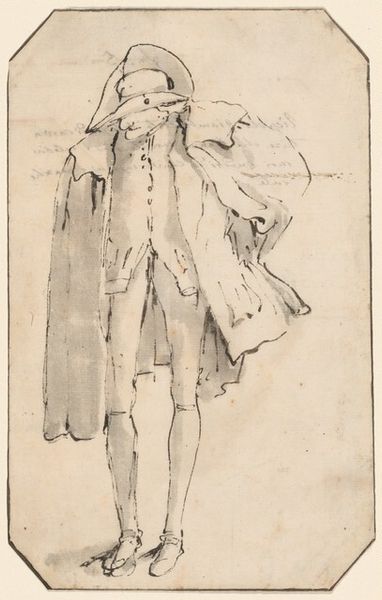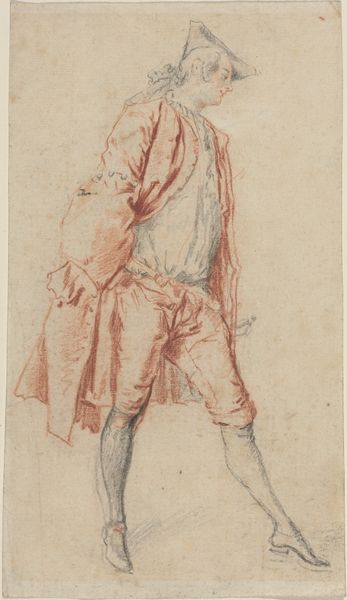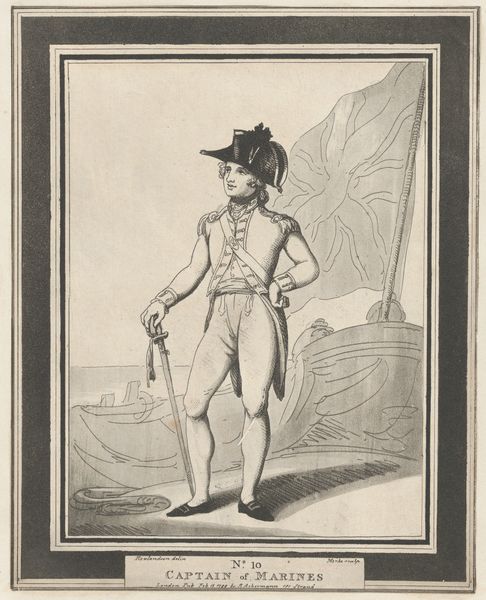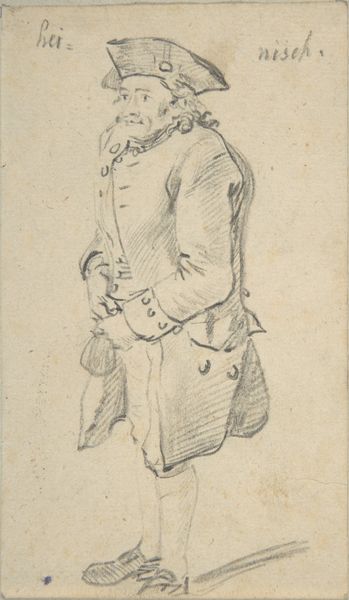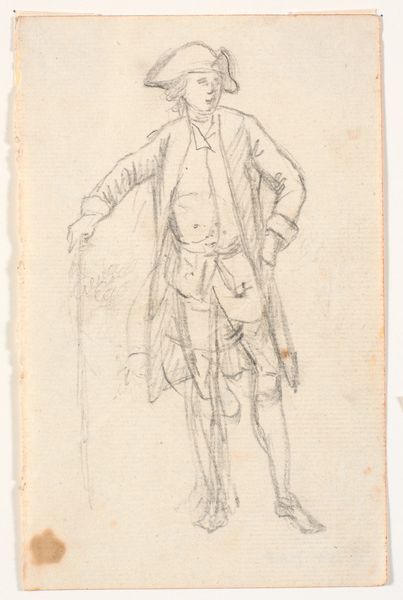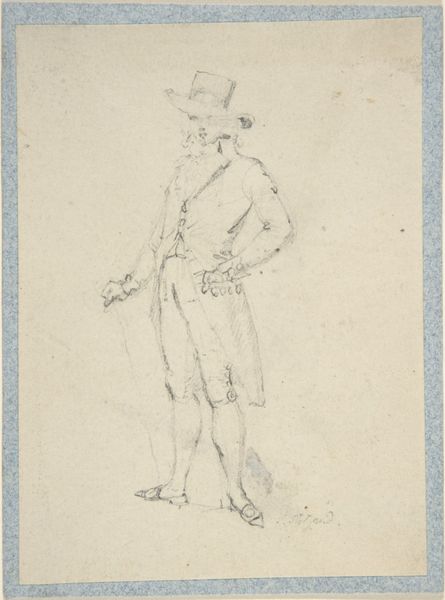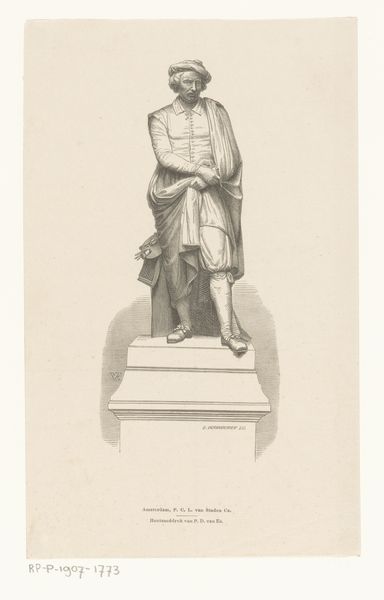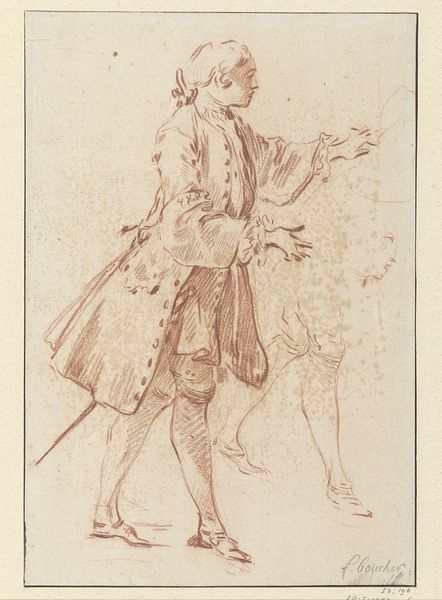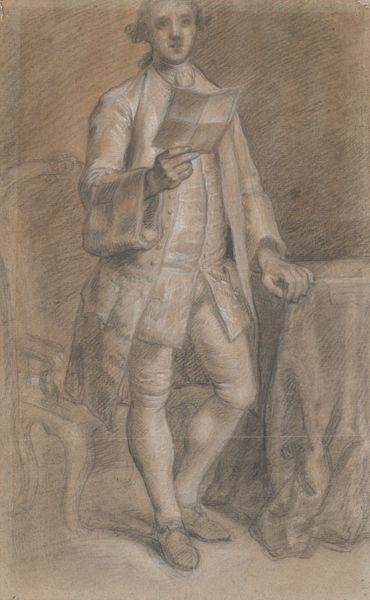
Portrait of George, 5th Duke of Marlborough, with Blenheim in the Distance 1817 - 1821
0:00
0:00
drawing, print, pencil
#
portrait
#
pencil drawn
#
drawing
# print
#
figuration
#
pencil drawing
#
romanticism
#
pencil
#
men
#
portrait drawing
Dimensions: Sheet: 8 15/16 × 5 1/2 in. (22.7 × 14 cm)
Copyright: Public Domain
Editor: This is Richard Cosway's "Portrait of George, 5th Duke of Marlborough, with Blenheim in the Distance," created between 1817 and 1821 using pencil, print, and drawing techniques. I’m struck by how much it captures the Duke’s self-assuredness, yet there’s a soft, almost romantic quality to the pencil work. What strikes you about it? Curator: It's interesting you note the romantic quality. Cosway was, after all, quite the celebrity portraitist. We see here the visual language of power and status carefully constructed. Consider the inclusion of Blenheim Palace in the distance, a blatant symbol of the Marlborough family's historical significance and contribution to British military prowess, which reminds us of the way institutions shape one's identity. Do you think the portrait serves to legitimize or perhaps subtly question the Duke’s position within this inherited legacy? Editor: I hadn’t thought about the critical aspect, but you’re right; it’s not simply celebratory. The romantic style could also be a commentary on the changing times and challenges to traditional power. Maybe he's also trying to make it more personal, as in “I’m George, but this is MY family palace.” Curator: Exactly! Think about the consumption of imagery back then; portraiture served very public functions. Cosway’s choices—the medium, the Duke’s pose, the palace as backdrop—are all intentional, designed to project a certain image for a specific audience, primarily for the gentry and aristocracy. Did you know his art collection later came to sale in the late 1820's in order to address Cosway's financial issues, adding yet another layer to understanding how art operated in the period? Editor: That is a wonderful extra detail to note that social role! It makes you think differently about patronage and the whole process of image creation. Curator: Indeed. Thinking about this portrait through the lens of social history provides a much richer understanding of its creation and reception than merely seeing it as a representation of one man. Editor: Thanks, I'll definitely look at portraits with that approach going forward. Curator: Likewise; thinking through your reactions, as an audience member in the 21st century, adds another perspective.
Comments
No comments
Be the first to comment and join the conversation on the ultimate creative platform.
